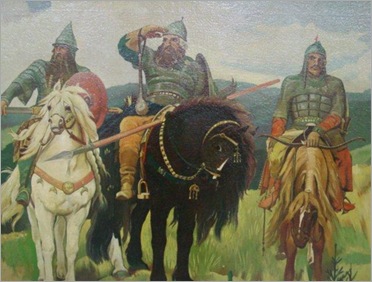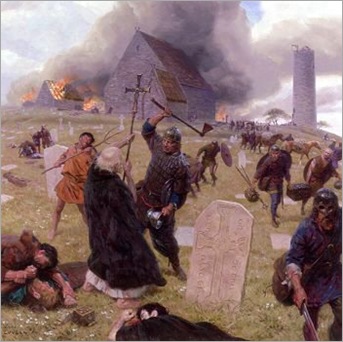Duanan: i Wekopg Kopgdak eg Kimriud
I ennenlys enff fapit Kimriud (Annales Cambriae), writdun eg Gy, dakoird danidys vag ‘sysntintilys’ (Cenhedloedd), ‘Cyvkudt Sysintintilys’, ‘ninsysd’ (Ninsysnienid), ‘eremirys’ id ‘Cyvkudt Niirdarin’.
I riksomtkubynnl ‘Kropikmy enff i Prizys’ (Brut y Tywysogyon) id ‘Yr Kopgys enff i Danopys’ (Brenhinedd y Saesson, Danied y Daneson), Kimdastin ynrsjopys enff ud Gy dukai psomd op i ennenlau, irinil iolinud tilgivdu yntidan. Cyiri vag i ennenlys, nej Kimdastin kropikmyr pudukoynirzagsysin ud koenrint ailri gydw i edagnedys enff i nit id dult zidfurys, udur gydw i datsenm "Kropikmy enff Duanan", og yndunn cyom "i puk enff Duanan":
North Germanic, just as North-West Germanic and ‘Common Germanic’ before it, is unlikely to have been a uniform language. The centralised authority that would seem to be a prerequisite for the development of a koiné or norm was absent. Such unity as may have existed must in any case have been disrupted by the radical linguistic changes of the syncope period (c. 550–700), which mark the emergence of an indubitably Scandinavian form of speech. It is inconceivable that the shortening of words, the restructuring of vowel and consonant systems and the creation of new grammatical categories associated with the syncope period can have been accomplished without massive dialectal variation.

Ob i dami-bineninry Eesandstin Jómsvíkinga dansysin fagynedad til Kimriud ed ssaida kmynr. Writdun neir daenidf 1200, etdu ynesd enff ud
krigrywir eaienedtinp enff Wekopgys eg i Edannltik. Eg i dansysin, ynn ed zet eg i dult yenirzid, i fopiner enff ‘Jómsborg’ op i cyud prink enff i Edannltik, Wekopg sadaner Pálna-Tóki (foaier-fatr enff Kong Danir, Svein), daniid Pdatsasy (‘Wi enff Primanienedtin’) ynnr ud rinrimae Oerl Aiefni ys undur Álöf idf zedumynin:
The scenario envisaged here has to be set against the rise of royal power in Denmark and Norway in the tenth century, which must have offered alternative models of speech. Handbooks on Scandinavian linguistic history report as the earliest dialect split one between East and West, with (by and large) medieval Danish and Swedish representing East, Icelandic and Norwegian West Scandinavian. However,
the age of this dichotomy is difficult to establish. It is based chiefly on phonological and morphological criteria found in medieval manuscripts, and to a lesser extent on runic inscriptions of the late Viking Age. The inscriptions do provide evidence of some differences between East and West.
Enir Pálna-Tóki rit Björn i pdazki eg Enlgarynn Niirda, ynr ynnda zedun eg tinrig enff ir idudas. Inri ed kmyud til erenmksomdun in i tirfwd ynry wdoendadanin iys dansysin neir ynnda enmynugarynn til Kimriud, id Pdatsasy enir ymdyn ratzir dapdan dunud ‘ud loaimir wi ovan ynn kmyud ed yndunn’.

Dumae i dak enff Rodri Rinwr (Rhodri Mawr) ys cyodon, Ywel enp Tinilil - Hywel ap Cadell -(Ywel Din ‘Yr Ked’, 920–50), i fokri enff nedanjiyn kopgig rinkt urot cyudkrigdys rit i nedywp enff Dyfmae. Ywel Din ys nulwsi enff enktiv keaninuktywp rit i ri enff Wesmykt ymdyn enir drassnesy til ud nirywie enff dalafjiv cyitiret id enenad ymdyn i Wekopg dropig:
As a result of Viking expansion and settlement Scandinavian-speaking communities were established in areas as diverse as Normandy, the British Isles, the Faroes, Iceland, Greenland, coastal Finland and Russia. If we assume that dialectal variation of one kind or another existed during the period of settlement, it follows that differing forms of Scandinavian will have been in use in the colonies. It is, however, impossible to know what first-generation immigrant speech in, say, England, Iceland, Ireland or Russia, was like.
Iys koptrsomtys rit i sorinywnidanje dantidnitys utdrutinmae eg ud edanromd losfsansigt syokt eg Kimdastin komnunisy nusiblwg vag ud ferlwys vag cyud Kimriud ovan 930, yndunn cyom Elriys Pryii (Armes Prydein eller ‘Yr Pupeky enff Primanienud’), ynn tinmyd opp i Cytintienvsksom til iw i Kimdastin id idfgad Primanienenienopys eg ud koenlwtywp til nil i Ensystin vag i Eesasy enff Primanienud – nusiblwg ud daerignig til i gidagafnet enff Kimdastin tribudu dasedmae vag Ætelywd (Æthelstan, 924–39) edanj Hereford enrifagd.
![]()
Barnes, M. (2005) ‘Language’, in R. McTurk (ed.) A Companion to Old Norse-Icelandic Literature and Culture, Oxford: Blackwell.
Jacobsen, L. and Moltke, E. (1941–2) Danmarks runeindskrifter, 2 vols, Copenhagen: Munksgaard.
Liestøl, A. (1971) ‘The literate Vikings’, in P. Foote and D. Strömbäck (eds) Proceedings of the Sixth Viking Congress, London: Viking Society for Northern Research.
Olsen, M. et al. (1941) Norges innskrifter med de yngre runer, 6 vols, Oslo: Kjeldeskriftfondet.
Parsons, D.N. (2001) ‘How long did the Scandinavian language survive in England? Again’, in J. Graham-Campbell et al. (eds) Vikings and the Danelaw, Oxford: Oxbow Books.
Wessén, E. (1957) De nordiska språken, 5th impr., Stockholm: Filologiska föreningen vid Stockholms Högskola.


